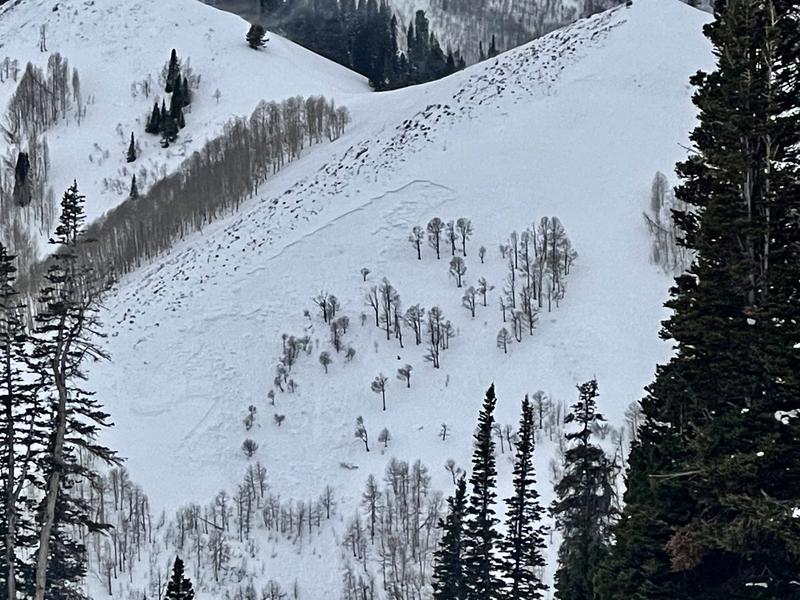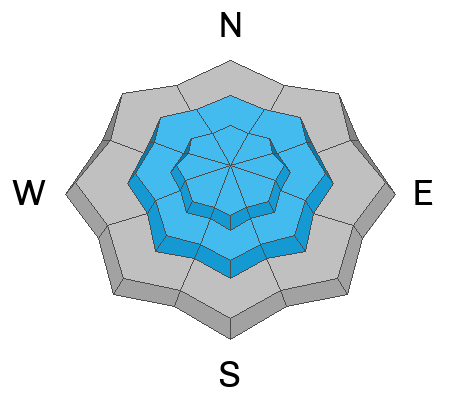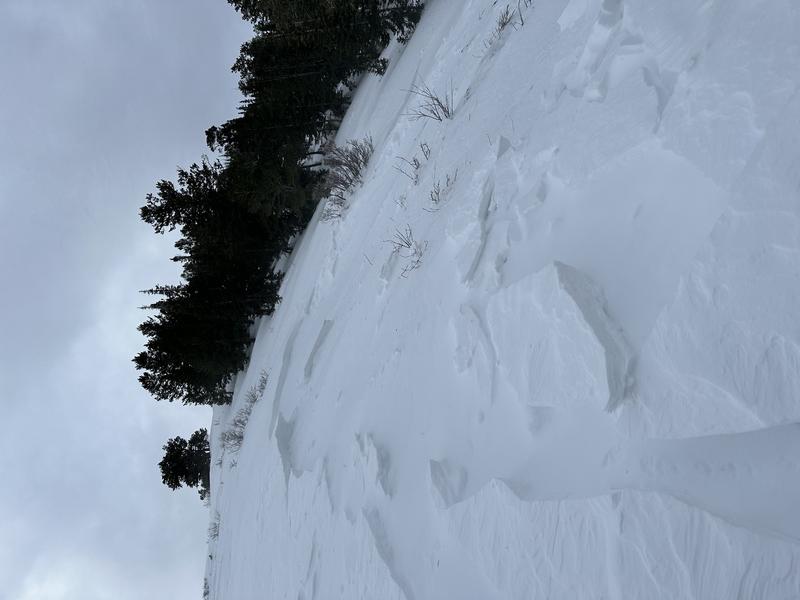Join the Utah Avalanche Center and the Utah Division of Outdoor Recreation to celebrate the Fourth Annual Avalanche Awareness week, from December 4 - December 11. Click
HERE to view the full list of events for the week.
HEADS UP - Deer Valley will be conducting avalanche control work near Empire Canyon; please avoid this terrain.
This Morning: A cold front came crashing through in the early morning hours and snowfall totals as of 6 am include 10-12" in the Cottonwoods and 8" along the Park City ridgeline. Winds have been blowing strong out of the south/southwest for the past 48+ hours and have now veered to the west/northwest. At upper elevations, winds are averaging in the 30's mph and gusting into the 60's mph. At mid elevations, winds are averaging in the teens and 20's mph with gusts in the 30's mph. Temperatures have dropped to the single digits and low teens F.
Today: Another 2-4" of snowfall is possible before the sky begins to clear out by late morning. Temperatures will be in the upper teens and low 20's F with west/northwest winds blowing in the 20's and 30's mph at 10,000' with stronger gusts into the 40's and 50's mph at the upper elevations.
Active weather continues with unsettled weather for Saturday followed by another storm on Sunday and Monday. Hello winter!
Avalanche activity on Thursday involved wind-drifted snow and included snow safety teams triggering avalanches failing in facets down at the ground and a:
Notice the elevations occurred between 8,500 and 9,000' indicating how the strong south/southwest winds on Thursday were drifting snow at the mid elevations.
We have received many
excellent observations over the last several days and it is worthwhile reading through them as a regular part of your trip planning. Please keep them coming. You can
submit an observation here or via the link at the top of this page.













